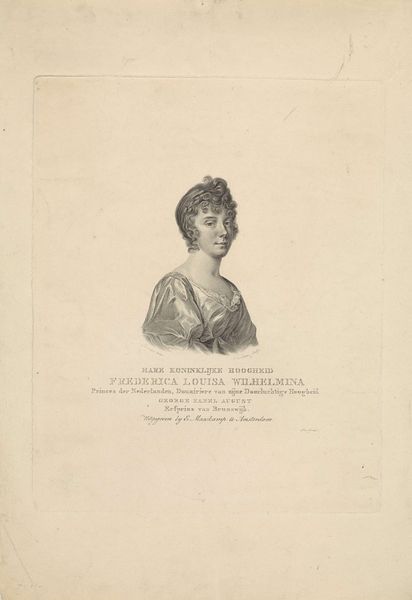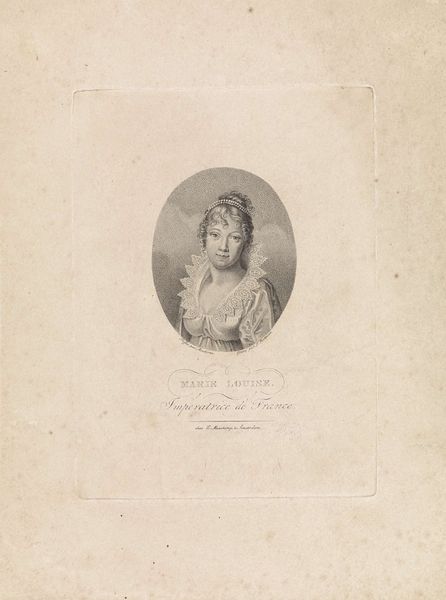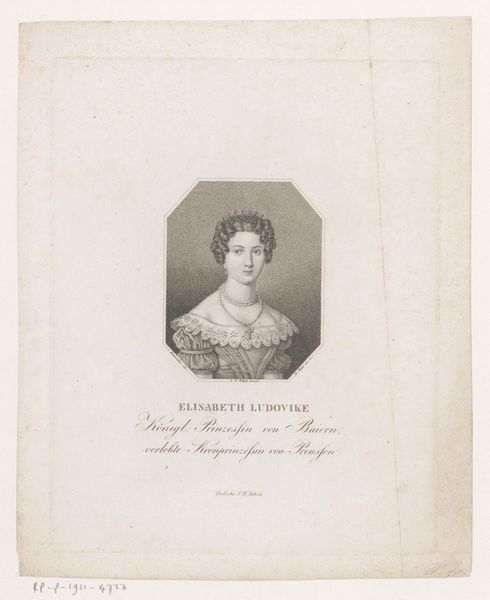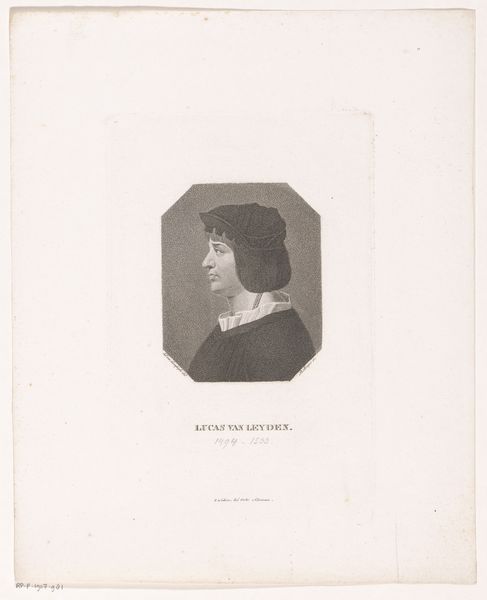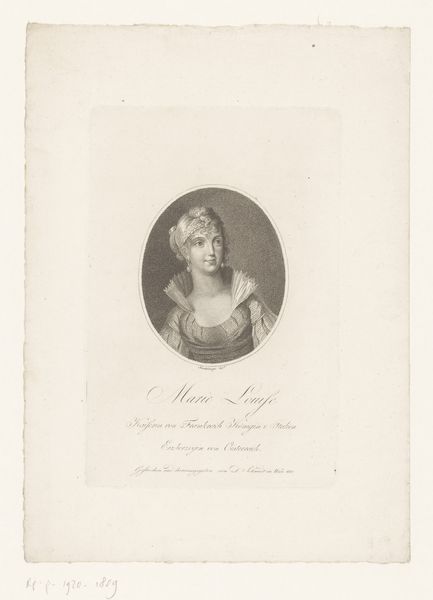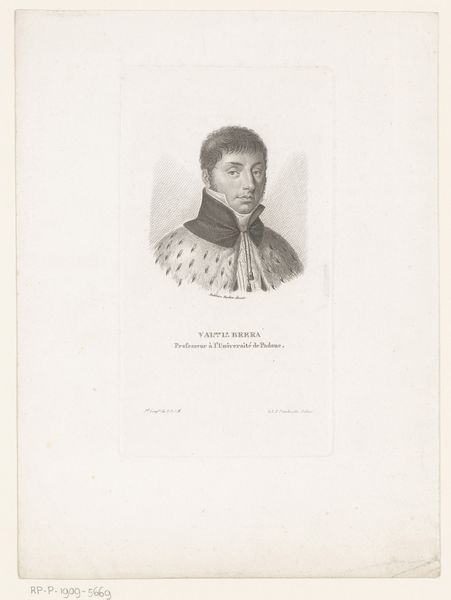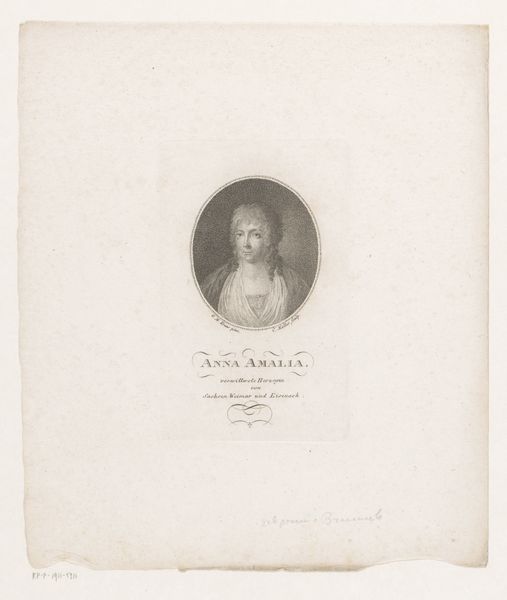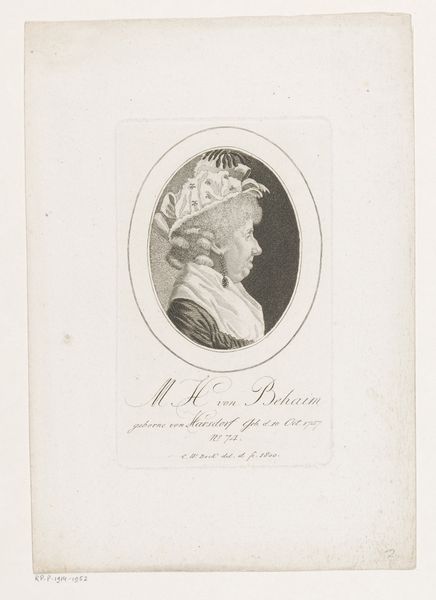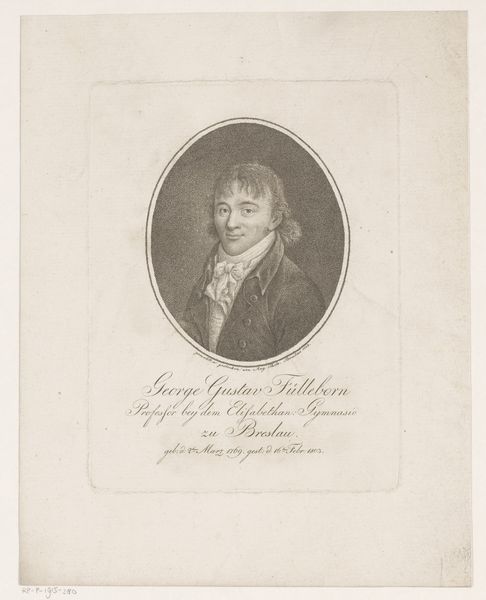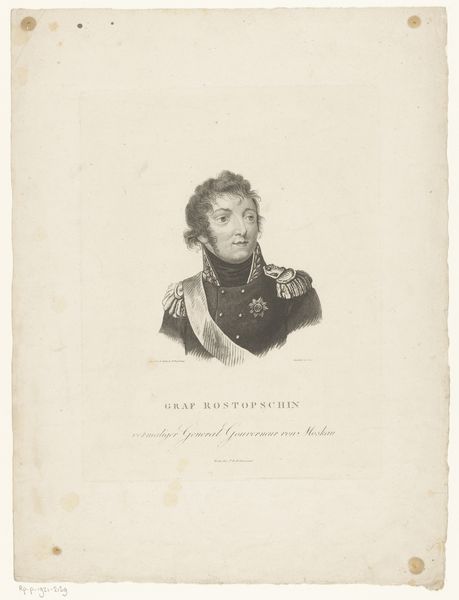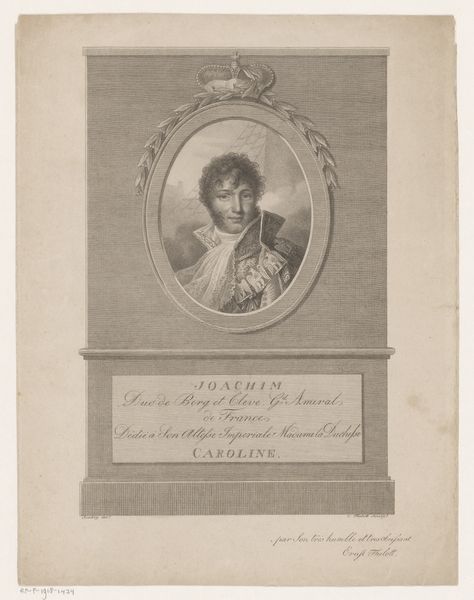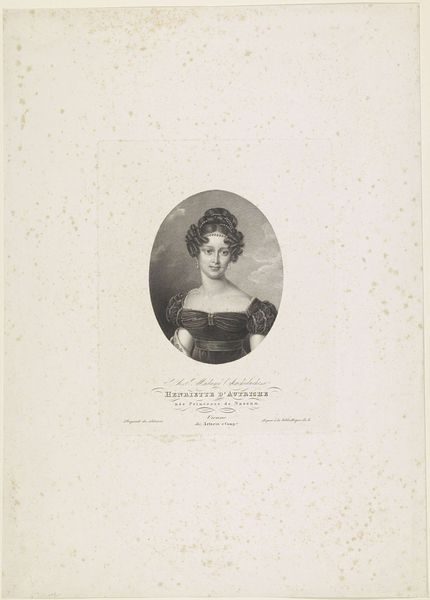
engraving
#
portrait
#
neoclacissism
#
aged paper
#
old engraving style
#
history-painting
#
engraving
#
historical font
Dimensions: height 235 mm, width 151 mm
Copyright: Rijks Museum: Open Domain
Editor: This is a portrait of Joachim Murat, King of Naples. It’s an engraving by Ludwig Gottlieb Portman, dating sometime between 1794 and 1828. It’s housed here at the Rijksmuseum. The delicate lines and the slightly faded quality give it a real sense of age. What's your take on this piece, particularly considering its historical context? Curator: It’s interesting how the engraving serves as a kind of propaganda, isn’t it? Think about it: Murat was a key figure in Napoleon’s empire, promoted through the ranks in revolutionary France, eventually appointed King. But these printed images weren’t neutral depictions. Editor: How so? Curator: Well, the Neoclassical style lends an air of legitimacy and stability. Engravings were easily reproducible, widely circulated, solidifying Murat's image and position for the public. Consider the text beneath the portrait; “King of the Two Sicilies” – this wasn’t simply informative, but a deliberate claim and assertion of power. It aimed to communicate power dynamics visually to a large audience. Editor: So the medium and the style aren’t just aesthetic choices, but tools for shaping public perception. I didn’t think about it like that. Curator: Exactly. Art is rarely produced in a vacuum. The institutions that commissioned and distributed such images – and, of course, the political climate – played a major role in its creation and impact. Think about who had access to these prints and what messages they reinforced. The very existence of such portraits aimed to affirm an emergent leadership. Editor: It's amazing to think how this seemingly simple portrait carries so much weight. Thanks for clarifying its historical role. Curator: My pleasure! It’s these layers of meaning that make art history so compelling.
Comments
No comments
Be the first to comment and join the conversation on the ultimate creative platform.
